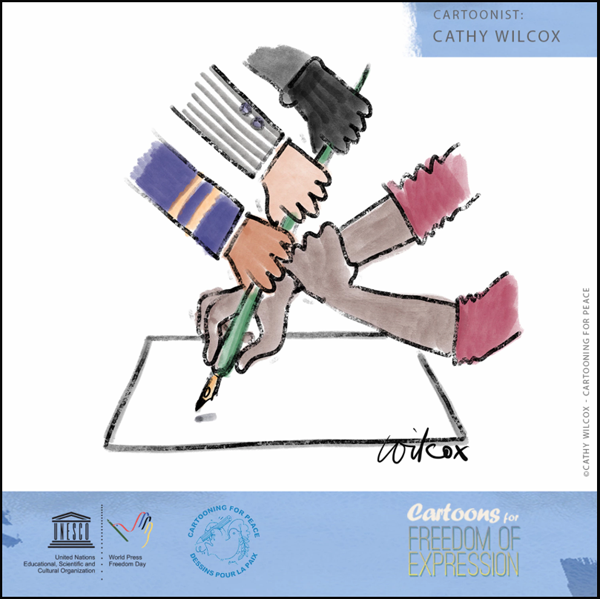Teach This Poem is a weekly series featuring a poem from our online poetry collection, accompanied by interdisciplinary resources and activities designed to help K-12 teachers quickly and easily bring poetry into the classroom.

The following activities and questions are designed to help your students use their noticing skills to move through the poem and develop their thinking about its meaning with confidence, using what they’ve noticed as evidence for their interpretations. Read more about the framework upon which these activities are based.
- Warm Up (whip around): What does freedom mean to you? Why?
- Before Reading the Poem (small groups): Look closely at the political cartoon by Cathy Wilcox. What do you notice first? Why? What else do you notice? Look again. What’s going on in this image? How do you know? What questions do you have? (Teachers, if you feel like your students might need more context, please consider having them read and discuss this short article on the First Amendment and the freedom of the press.)
- Reading the Poem: Read the poem “On the Freedom of the Press” by Benjamin Franklin silently. Notice the words and phrases that jump out at you, then think about what you noticed as you annotate the poem. (Teachers, as students read, you may want to provide dictionaries that students can use to look up unknown or confusing words.)
- Listening to the Poem (enlist two volunteers to read the poem aloud): Listen as the poem is read aloud twice, and write down any additional words and phrases that jump out at you. Call back the lines that you like by saying these lines aloud with your group.
- Small-group Discussion: Share what you noticed in the poem with your partner and another pair of students. Based on the details you just shared, how does this poem relate to the First Amendment, the Freedom of the Press, and the political cartoon you viewed earlier?
- Whole-class Discussion: What is the tone of the poem? How does the narrator in the poem feel about freedom and expression? Do you agree or disagree? Why?
- Extension for Grades 7-8: Read or reread the article about the First Amendment and the freedom of the press. Write a short, three-to-five-minute speech that answers these questions: What does freedom mean to you? Is the freedom of the press important to you? Why or why not?
- Extension for Grades 9-12: Continue researching the first amendment by reading about the five freedoms it protects, including the freedom of the press. Choose to research one of the following famous court cases about the first amendment in schools: Tinker v. Des Moines Independent Community School District, 1969; Hazelwood School District v. Kuhlmeier, 1988; or Bethel School District v. Fraser, 1986. Write an op-ed about your chosen case. Do you agree or disagree with the way the court ruled? Why? How might this case be different if the same event happened today, at your school?
More Context for Teachers
“I am often asked about the role of the writer and the poet in the United States, his or her relation to the public world.” In her lecture “Not Persuasion, But Transport: The Poetry of Witness,” Carolyn Forché considers the vital international role of poetry and its relationship to the freedom of speech. Read more.
